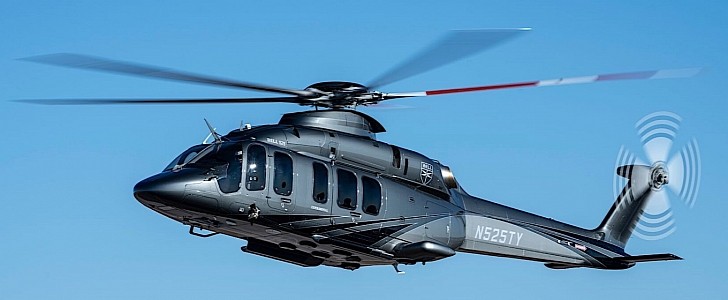Although the general perception is that automobiles are mostly responsible for a great deal of the world’s pollution (hence the strides for a transition to electric powertrains), the reality is there are more factors at play here. And aviation is one of them.
As per various studies conducted over the years, aviation is responsible for about 2 percent of all carbon dioxide released into the air each year. When it comes to means of transport, that number increases to 12 percent of the total, a figure that, even if significantly lower than the 74 percent coming from ground transportation, is still significant.
It’s of course much more difficult to convert an aircraft or helicopter to run on electricity, so the only viable means of cutting down those numbers is coming up with new fuels. SAF is how they call them, or Sustainable Aviation Fuel.
Already a number of manufacturer are testing the use of various such fuels, produced from renewable materials, and that number is likely to increase even further.
Over at Bell, SAF is at the center of several research projects, and this week we’ve learned one of the most important machines in its portfolio, the 525 Relentless, completed earlier in the summer its first flight using the stuff.
Bell does not say how much the flight lasted, or how the aircraft performed, but it does hint it was a success and more tests are to follow. What’s more, the company is also going for certification with the FAA for more flight testing.
In the case of the Relentless, the SAF used is produced by a company called Avfuel, which says it “anticipates a 22-metric ton reduction in lifecycle carbon emissions per truck load.” The helicopter is the first rotorcraft to use this particular fuel, made from “waste and residue materials.”
As for the helicopter, we’re talking about a medium-lift machine introduced in 2015. Capable of transporting about 20 people, it is seen by its maker as a utility, transport or search and rescue bird.
It’s of course much more difficult to convert an aircraft or helicopter to run on electricity, so the only viable means of cutting down those numbers is coming up with new fuels. SAF is how they call them, or Sustainable Aviation Fuel.
Already a number of manufacturer are testing the use of various such fuels, produced from renewable materials, and that number is likely to increase even further.
Over at Bell, SAF is at the center of several research projects, and this week we’ve learned one of the most important machines in its portfolio, the 525 Relentless, completed earlier in the summer its first flight using the stuff.
Bell does not say how much the flight lasted, or how the aircraft performed, but it does hint it was a success and more tests are to follow. What’s more, the company is also going for certification with the FAA for more flight testing.
In the case of the Relentless, the SAF used is produced by a company called Avfuel, which says it “anticipates a 22-metric ton reduction in lifecycle carbon emissions per truck load.” The helicopter is the first rotorcraft to use this particular fuel, made from “waste and residue materials.”
As for the helicopter, we’re talking about a medium-lift machine introduced in 2015. Capable of transporting about 20 people, it is seen by its maker as a utility, transport or search and rescue bird.





